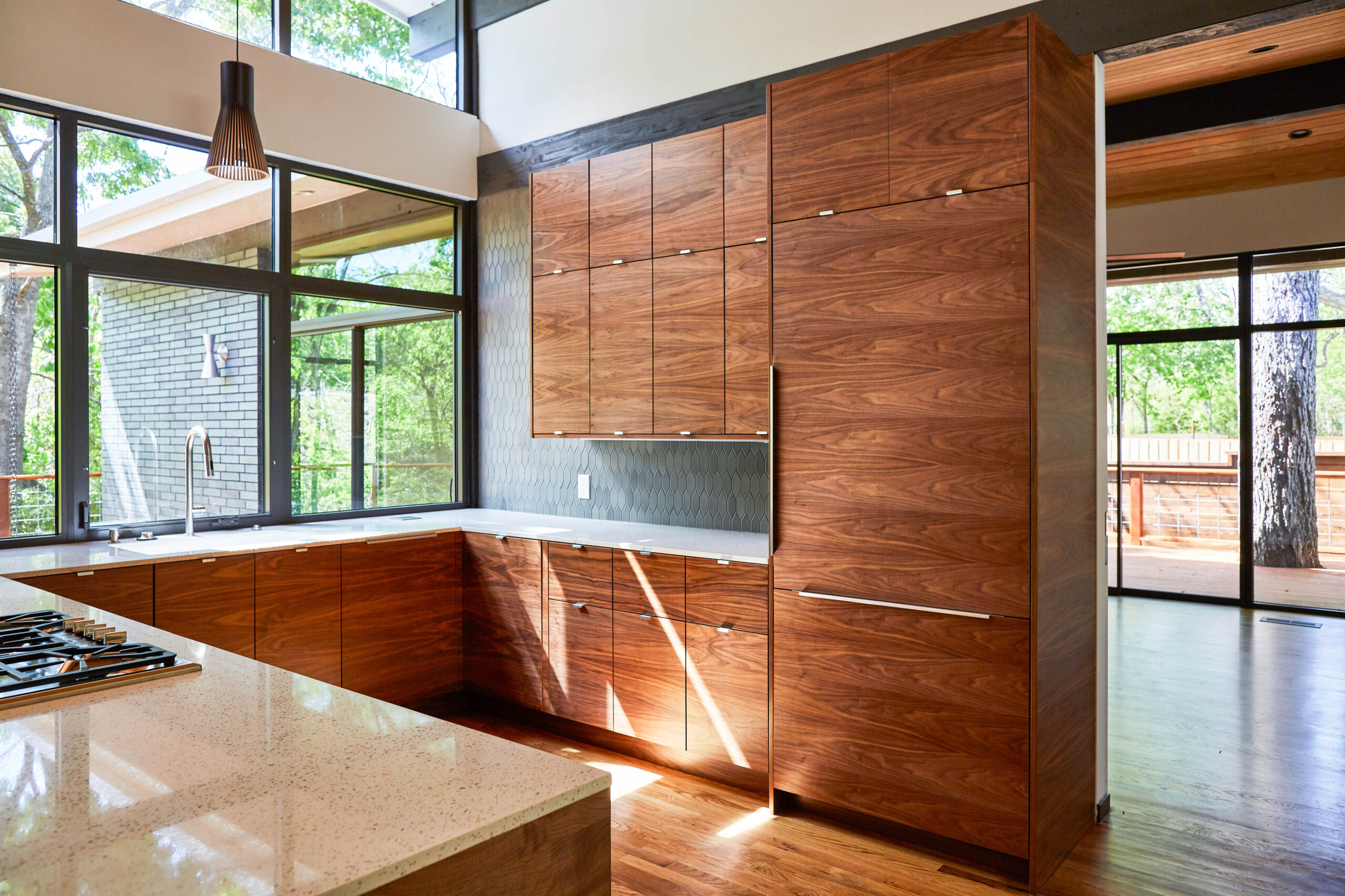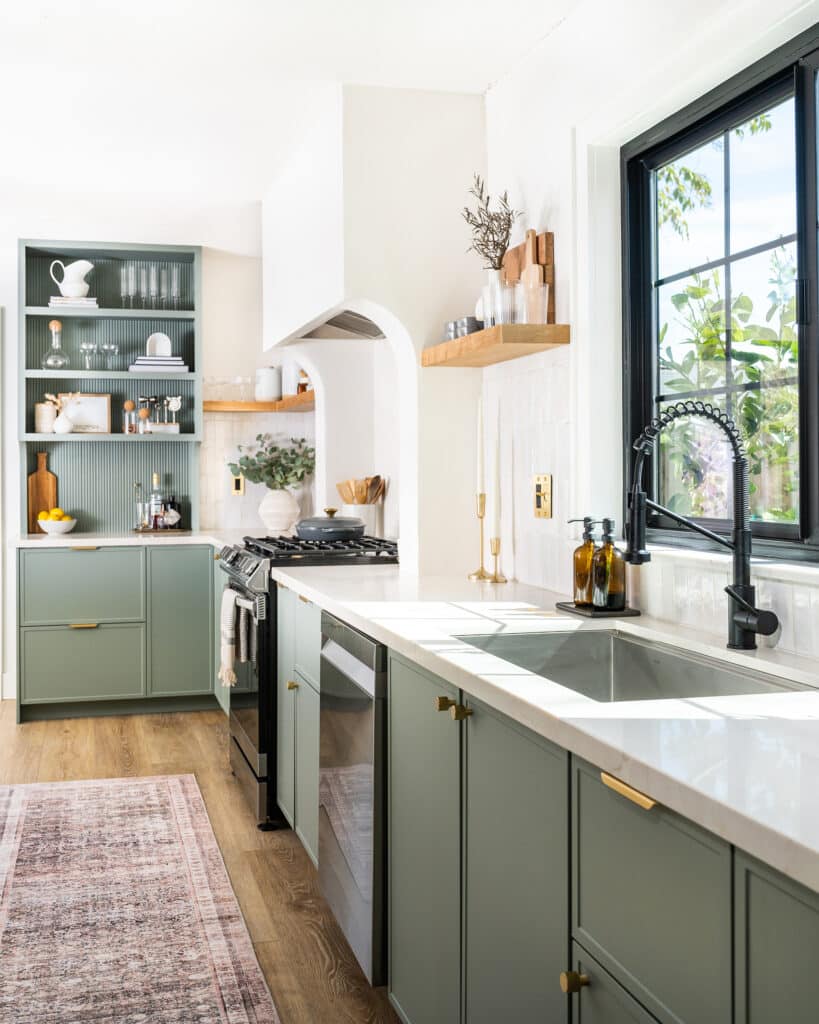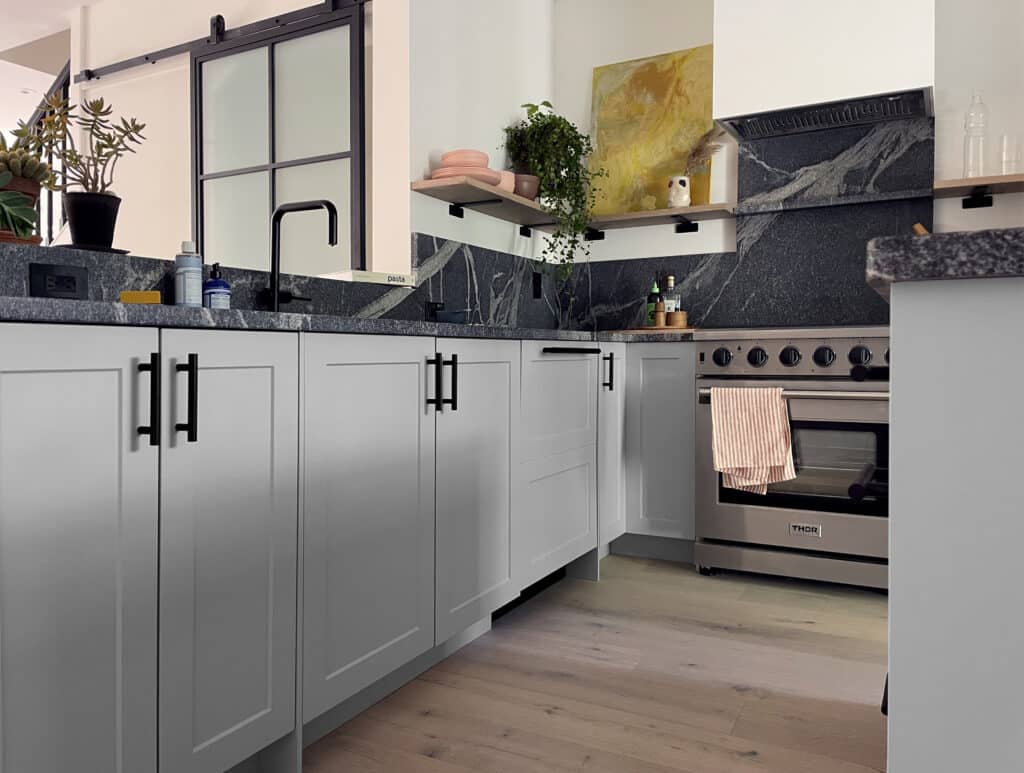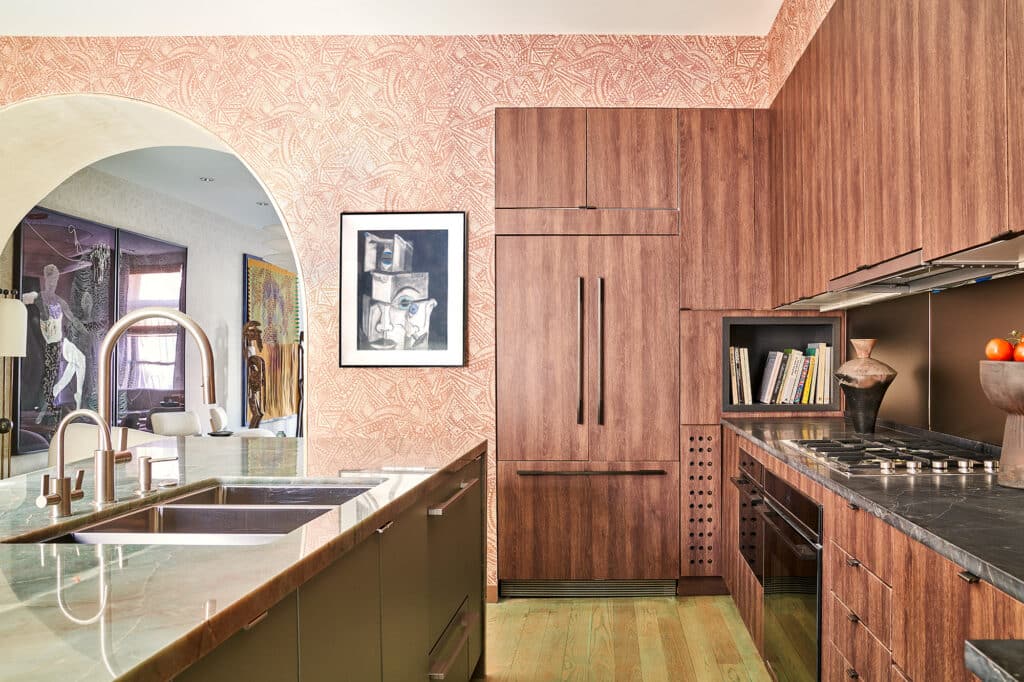Chances are if you’re here reading this, you’ve gone down an Internet deep dive of walnut kitchens.
Once you see one, you want to see more (which is why we’ve rounded up some of our favorite projects for you already). And we know, we’re not the only ones who make these incredibly beautiful kitchens, but we’re the only ones who do it at an affordable price. We chatted with our founder, John McDonald, to get his insights—he was the one prepping our Classic Walnut fronts for customers when the company first launched 10 years ago, so he gets it. Keep reading to learn if they’re right for your home.
Each Kitchen Is One-of-a-Kind
The sample you get? It won’t be exactly the same as the fronts created for your kitchen. Not in color and not in the unique patterns of the wood. That’s because each tree is different (thank you, nature). “You’re seeing basically this one-of-a-kind, once-living thing playing out across 10, 20, 30 cabinets. Things like burl or knots or even the newer sapwood add this incredible character,” John says. “You can replicate a lot of it, some of the man-made stuff is incredibly realistic, but it will never be the real thing.” (We also sell the man-made stuff, like our Impression fronts which are non-sequenced, textured melamine with a vertical grain direction.) If you value certainty and consistency over the unexpected quirks of a natural product, this option might be a better fit for your kitchen.
Quick note: Confused about what “sequencing” means? Basically, the patterns in the wood will be continued either vertically or horizontally across your cabinets. It requires an incredible amount of precision and attention to detail in order to get a totally sequenced look. John says it best: “Each project really is a puzzle”.
They Cost More Than Other Semihandmade Fronts
That’s because as we’ve previously stated, they’re real wood (and they’re also handmade). A real person is cutting and sequencing your fronts with genuine wood, so this is a completely custom product. The cost of materials and labor by expert woodworkers increases the cost to be more than your average Semihandmade fronts paired with an IKEA kitchen system.
“There’s a reason why companies our size or bigger don’t produce Walnut fronts,” John says. “It’s expensive and involves a lot more labor than our standard doors. If something gets miscut or there’s any damage during transit or installation, repairing the pieces is incredibly challenging.”
The Investment Is Worth the Value
Okay, so we’ve covered that Walnut fronts cost more than our other fronts for good reason, but why should you make the investment? And how does the cost of our Walnut fronts compare to other walnut kitchens? “Generally speaking, an IKEA kitchen with our Walnut doors is probably about 60% more than the brand’s top-level offering, but it’s still close to 30% less than a custom Walnut kitchen,” says John. “The fact is, there’s nobody that does what we do at our scale and quality anywhere near our pricing. That’s the thing I’m most proud of.”
Still have questions about our genuine, timeless doors? Watch to learn more about the unique qualities of our Classic Walnut fronts. And explore more details on Semihandmade.








